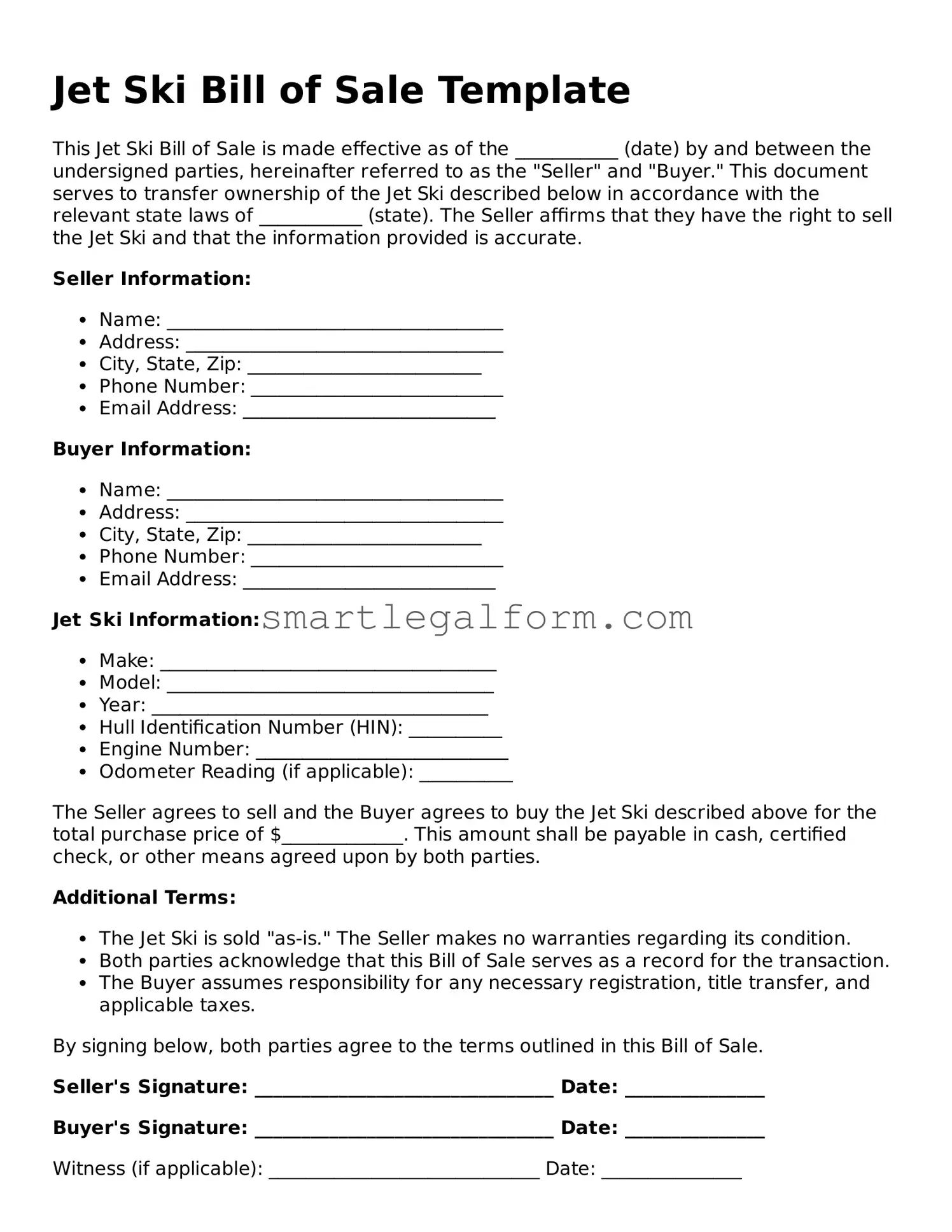Filling out a Jet Ski Bill of Sale form can seem straightforward, but many people make common mistakes that can lead to complications later. One of the most frequent errors is failing to provide complete information about the Jet Ski itself. Buyers and sellers should ensure that the make, model, year, and Vehicle Identification Number (VIN) are accurately recorded. Omitting any of these details can create confusion and may even lead to disputes down the line.
Another mistake involves not including the correct sale price. The price should reflect the agreed-upon amount, and it should be clearly stated in the form. If the sale price is left blank or inaccurately noted, it could affect taxes or registration processes in the future.
People often forget to include the date of the sale. This date is crucial for establishing when the transaction took place. Without it, issues related to ownership transfer and warranty claims may arise. It’s a simple detail that can have significant implications.
Many individuals neglect to sign the form. Both the seller and the buyer need to sign the Bill of Sale to make it legally binding. A missing signature can render the document invalid, leaving both parties without protection should any disputes occur.
Another common oversight is not providing identification details. Each party should include their full name and address. This information helps to verify the identities of both the buyer and seller, which is important for legal purposes. Failing to do so can complicate the transfer of ownership.
Some people also overlook the importance of including any warranties or guarantees. If there are specific conditions regarding the Jet Ski’s condition or any promises made by the seller, these should be documented in the Bill of Sale. This protects both parties and clarifies expectations.
Errors can also occur when it comes to the method of payment. Not specifying how the payment will be made can lead to misunderstandings. Whether it’s cash, a check, or a money order, clarity on the payment method is essential.
Another mistake is not keeping a copy of the completed Bill of Sale. Both the buyer and seller should retain a copy for their records. This document serves as proof of the transaction and can be useful for future reference, especially in case of any disputes.
Lastly, people sometimes forget to check local regulations regarding the sale of watercraft. Different states may have specific requirements for the Bill of Sale. Familiarizing oneself with these regulations can prevent issues with registration and title transfer.
